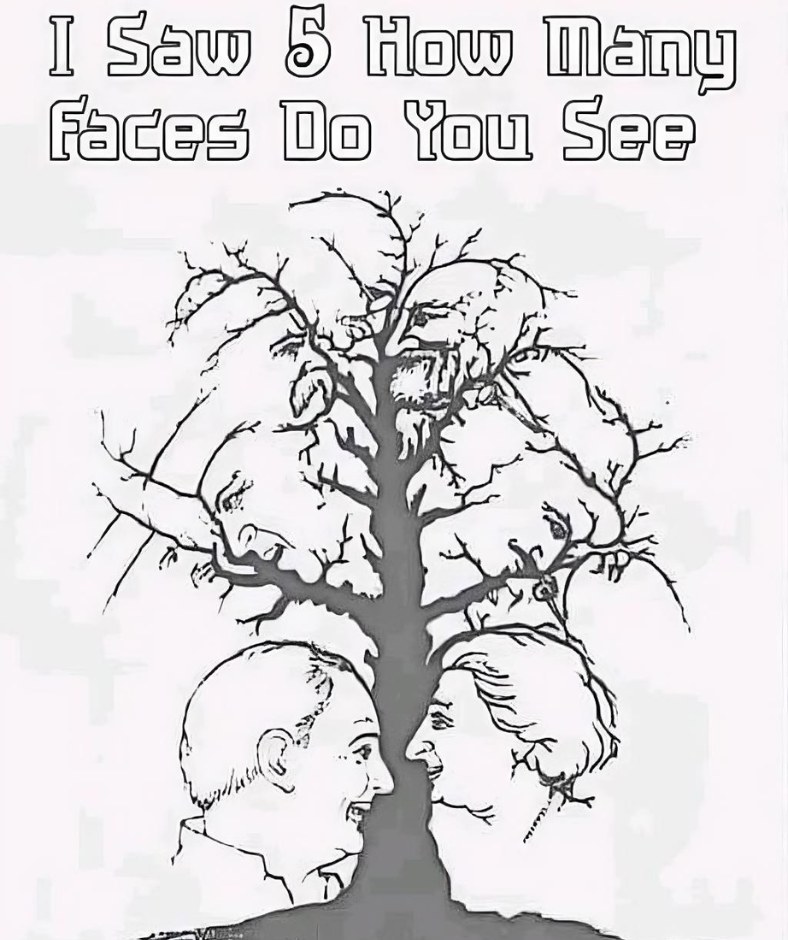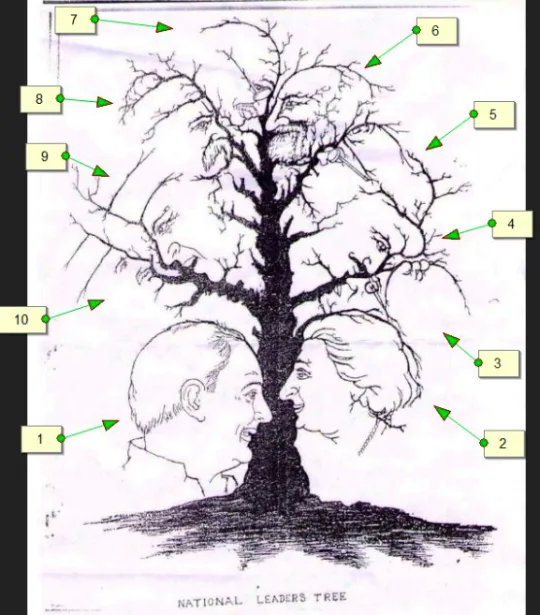Optical illusions have long fascinated both scientists and everyday puzzle lovers, and one of the most enduring examples is the “Tree of Faces.” This illusion doesn’t just test your eyesight—it challenges your brain’s perception and your attention to detail. At first glance, the image appears to be an intricately drawn tree with twisted branches and dense foliage, but if you look a little closer, you’ll realize that hidden among the limbs and leaves are multiple faces, some of which belong to famous historical figures.

The challenge that has gone viral online is simple: can you spot all the hidden faces in less than 10 seconds? If you can, you may be among the top 1% of highly observant individuals. The task might sound easy, but most people fail to identify every hidden face in such a short time. Our brains are wired to look at the overall picture before breaking it down into individual components. This tendency to process visuals holistically means that we often miss fine details—especially when they’re subtly blended into the background. In the case of the Tree of Faces, the artist cleverly uses natural shapes, shading, and branch placement to camouflage facial features so well that they initially appear to be just part of the tree.
This illusion isn’t new; versions of it have been around since the 19th century when similar puzzles were printed in newspapers and books to entertain readers and challenge their perception. While the exact number of faces varies depending on the version, some editions claim there are at least ten or eleven faces, including well-known personalities like Margaret Thatcher and Mikhail Gorbachev. Other interpretations suggest the inclusion of influential Indian leaders.
Regardless of who the faces represent, identifying them all within a brief window of time is the true challenge. According to researchers who study visual perception, the difficulty of this illusion stems from how our brains process and filter information. We tend to ignore elements that don’t match our expectations. If we think we’re just looking at a tree, we unconsciously block out anything that doesn’t fit that narrative. This phenomenon is part of a broader concept called “inattentional blindness,” where focusing too hard on one aspect of an image causes us to overlook others. Additionally, our brain often fills in missing visual gaps using assumptions, which can lead us to completely miss subtle details that don’t immediately stand out. That’s why, even though the faces are technically visible, most people don’t see all of them without prompting. To improve your ability to solve puzzles like this one, experts recommend a few useful techniques.
First, scan the image methodically instead of letting your eyes wander randomly. Break the image into quadrants or small sections and analyze each one carefully. Second, switch your focus between the foreground and background. Faces tend to have curves and symmetry that stand out when you adjust your attention. Third, consider environmental factors—tilting your screen or changing the lighting can help reveal hidden contrasts that make the faces more apparent. Finally, get into the habit of spotting visual anomalies in everyday life—whether you’re people-watching or observing patterns in nature. Not only do illusions like the Tree of Faces provide fun and entertainment, but they also help us understand how individual brains process the same information differently. Some people may identify several faces within seconds, while others might take minutes or miss most of them altogether.

This variation is a reminder of how uniquely we perceive the world. These puzzles continue to captivate audiences because they tap into our innate curiosity and our desire to solve mysteries. In a world full of instant answers, there’s something deeply satisfying about staring at an image and having an “aha!” moment when a face finally pops into view. So, if you managed to find all the hidden faces in under 10 seconds, congratulations—you have extraordinary pattern recognition skills and are likely part of a small group with highly developed visual perception. But if you didn’t, don’t worry—like any skill, this one can be improved with practice. Next time you encounter an optical illusion, slow down, change your perspective, and challenge your assumptions—because sometimes, the truth is hidden in plain sight.





